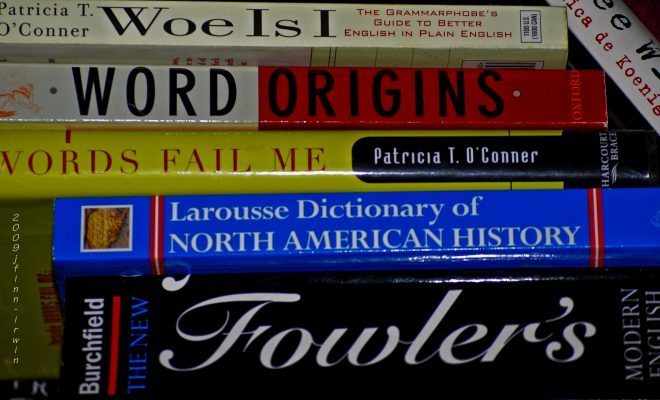 "Communication" courtesy of [Jackie Finn-Irwin via Flickr]
"Communication" courtesy of [Jackie Finn-Irwin via Flickr]
Education
Merits of Bilingual Education Divide the Education Community
The United States has long had a population heavily built on immigration. Currently, many immigrants coming into the United States are from Hispanic nations. The question of whether or not the U.S. should provide bilingual educational opportunities for these immigrants and their children has long been a pressing debate. Read on to learn about what bilingual education is, why it’s important, and what the arguments are both for and against.
History of Bilingual Education
Bilingual education has long been offered by the United States to its immigrant populations. In the late 1830s, Ohio began offering English classes for German immigrant students. Louisiana also offered early bilingual education classes for French-speaking immigrants. Wherever there were large influxes of immigrant populations, states enacted provisions to provide multilingual education for those groups.
As a result of reactionary national attitudes during the early twentieth century, however, the U.S. started to shift away from offering bilingual education services. English-only education was adopted in a sort of a sink-or-swim attitude. It wasn’t until later in the twentieth century that bilingual education became a consideration once again.
Bilingual Education Act of 1968
The Bilingual Education Act (BEA) of 1968 was passed as part of a move toward more expansive Civil Rights for immigrant populations, particularly Hispanic immigrants. The BEA mainly helped to provide federal funding to states and schools looking to implement bilingual education programs. The BEA has undergone many significant changes since its original passage. In 1974, the act was expanded to reach more students and provide additional funding. In 1978, amendments were added again to further expand the pool of students reached by the act to those who spoke some English but still needed help gaining full proficiency. The bill was expanded again in 1984 and 1988, creating more professional support and flexibility in bilingual education programs.
What Bilingual Education Does
Since the first large waves of Hispanic immigrants began to arrive and build their lives in America in the 1960s, bilingual education has been seen by some as the answer and by others as the roadblock to English language acquisition and academic success for the children of foreign-language speakers. From 2000 to 2010, the US Census captured a 43 percent increase in the Hispanic population of the United States, resulting in 35 million children aged five and over who speak Spanish in their homes.
The goal of bilingual education is to help students who are learning English as a second language by teaching partially in their native language and partially in English. In this way, supporters believe, the transition from their native language to English is eased and the student is able to learn other subjects such as math, science, and history while becoming fluent in English. Despite a sound methodology, bilingual education has become controversial in the last few decades as to whether or not it truly brings non-native speakers up to speed with students who speak English as their first language.
Since the late 90s, California, Arizona, and Massachusetts have all passed laws banning bilingual education in favor of an English immersion model. In the rest of the states bilingual programs can look wildly different, and this lack of continuity adds fuel to the burning debate over the virtue of bilingual education.
What are the arguments in favor of bilingual education?
Supporters of bilingual education argue that these programs have strong academic benefits for non-English speaking students, in addition to the added benefit of preserving cultural heritages and preparing our students for success in a global economy. Some studies have shown that it is easier for students to learn how to read in their native languages and then transfer those skills over into a new language, rather than learning to read and learning a new language at the same time. Simply put, once reading “clicks” in one language, it’s a lot easier to do in another language.
Vocabulary is also easier to transition when a student already knows a similar word in his native tongue. Most students, regardless of what they learn in school, will probably speak their native languages at home. Being able to incorporate that into their studies allow for a more comfortable transition, and better ability to interact with their families about their schoolwork. With the struggle of learning to read eased by bilingual programs, many suggest this would reduce student stress and contribute to smoother acculturation and socialization of these students.
In the multicultural atmosphere of America, supporters argue that it is important to preserve the cultural heritage of foreign language speakers by allowing them to incorporate their native languages into American education and thus, American culture. It also helps children to retain their identity and be able to communicate with relatives who may not speak English. A strong sense of cultural identity can have a positive effect on a child’s well-being, confidence, and emotional and mental health. It also helps them share their language and cultural identity with their English-speaking peers.
Additionally, supporters point out that in an increasingly global economy, the United States will need more bilingual business executives to ensure that American businesses remain compatible with foreign markets. Countless other professions, including health care, education, legal jobs, and others can be aided by including workers who speak multiple languages fluently. Bilingual education also helps native English speakers — they will have access to jobs that require bilingual speakers.
What are the arguments against bilingual education?
Opponents also have studies and data to suggest that a bilingual education in fact retards student growth and delays English acquisition. Opponents often favor English immersion, a method in which the student is taught in nothing but English. The argument here is that by being immersed in the language students will become English-literate more quickly and will be able to join students on the regular educational track.
Opponents argue that bilingual education programs actually delay English acquisition by “coddling” students in their native language for too long. The failure of bilingual programs keeps students on a lengthened ELL track that essentially segregates these students from the rest of the student population, making acculturation and socialization among their American peers more difficult and denying them from ever reaching their true educational potential. Additionally, opponents argue that the language of financial success in America is English, and that although the global economy brings more foreign languages in contact with American businesses, it is still English that is spoken in American board rooms and meetings, making it imperative that the children of non-native speakers learn English as quickly as possible through English immersion.
Bilingual education is also expensive and requires more staff. These staff members need to be trained in not only how to speak both languages in which they are teaching, but also how to appropriately teach children how to learn English in an academic setting.
Conclusion
The debate over bilingual education is ongoing, and as the United States becomes increasingly multicultural, it will likely continue to wage on. For now, however, the BEA remains in effect, and the United States strives to do its best to educate every student, regardless of background.
Resources
Primary
Brockton (MA) Public Schools: Bilingual Education Program
State of California: English Language in Public Schools Initiative Statute
Additional
National Association for Bilingual Education: What is Bilingual Education
Education Week: Should Bilingual Learning Be Required?
Denver Business Journal: The Pros of Bilingual Education
Atlantic: The Case Against Bilingual Education
Human Events: Abolish Bilingual Education
Hoover Institution: Bilingual Education: A Critique
ProEnglish: Bilingual Education
WNYC: English Immersion: The Bilingual Education Debate
MoraModules: The Bilingual Education Controversy: a Road Map
CNN: Should Kids Be Taught In Spanish?
ASCD: Bilingual Education: Effective Programming for Language-Minority Students






Comments